Virus 8
Mujica backs Cuban doctors for Nobel

Pepe Mujica: “It is an honor to support the candidacy for the Nobel Peace Prize for Cuban doctors”.
 By Maribel Acosta Damas. Cuban journalist, specialized in Television. She is a professor at the Faculty of Journalism of the University of Havana and holds a PhD in Communication Sciences.
By Maribel Acosta Damas. Cuban journalist, specialized in Television. She is a professor at the Faculty of Journalism of the University of Havana and holds a PhD in Communication Sciences.
March 12, 2021
Translated and edited by Walter Lippmann for CubaNews.
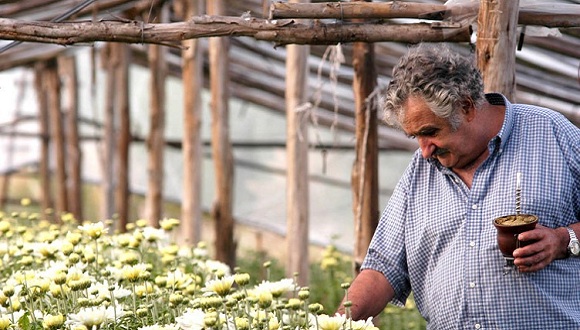
Pepe Mujica, Minister of Livestock and Agriculture in the first government of Tabaré Vázquez in 2005 and then President of Uruguay between 2010 and 2015. Photo: Resumen Latinoamericano.
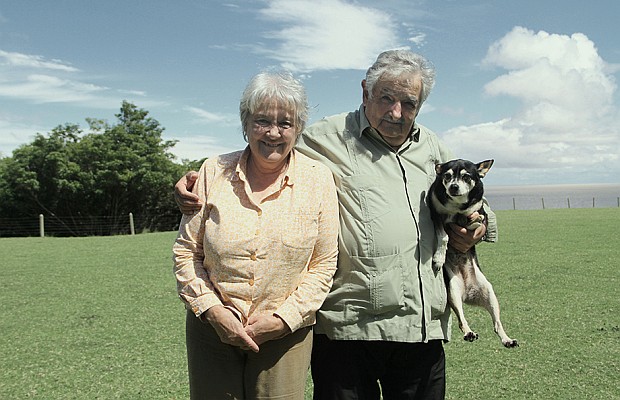
Photo taken from Cubaenresumen.org
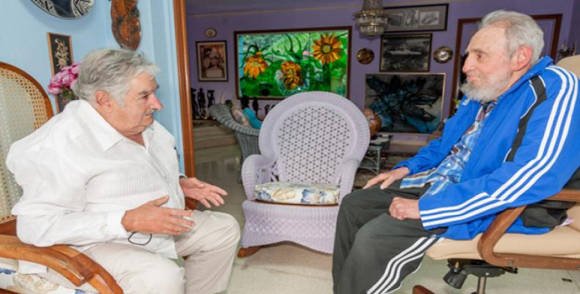
In my living room I have a picture of Che, and I have his letters in my memoirs, in a notebook. It turned out that Evo Morales wanted to make a faithful reproduction of Che’s wallet in the Bolivian guerrilla, the last one he had. Evo Morales had it made as a gift to his friends, and I have it. Inside there is also the facsimile copy of the campaign diary and a notebook… I keep it hanging… and I always show it to them when they come to visit. Che is still there. For us, it is an indelible attitude, no matter how much time goes by…
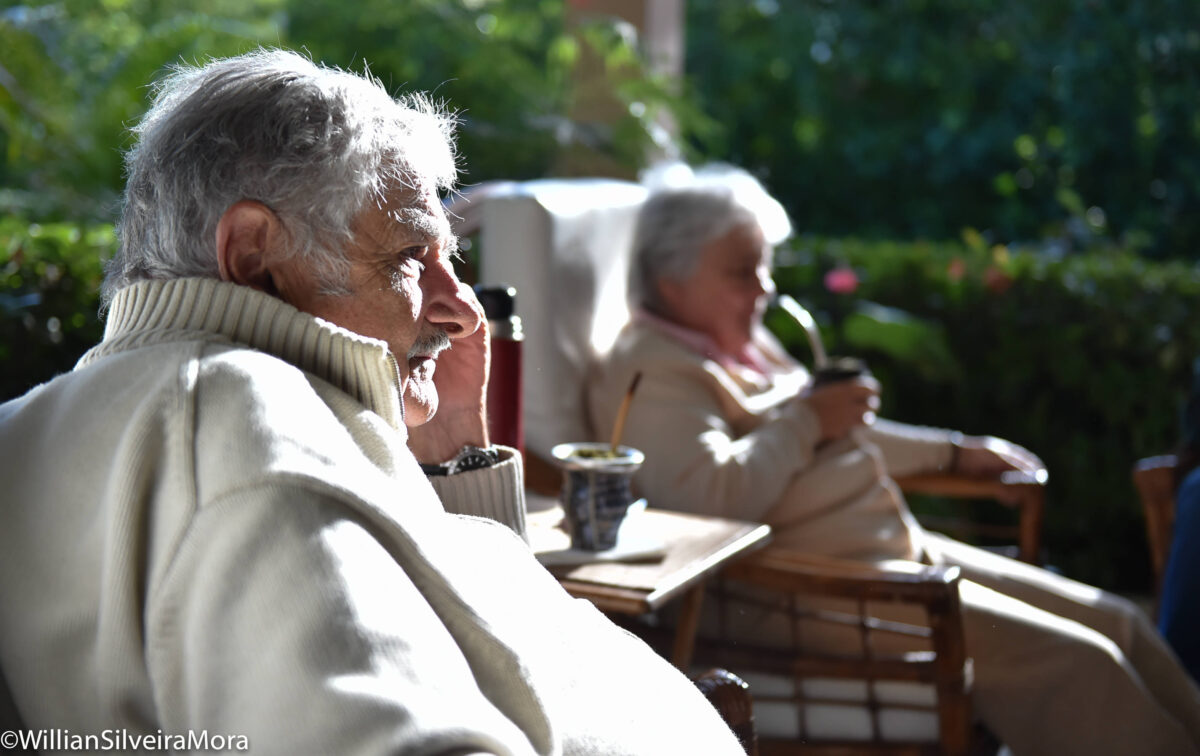
José “Pepe” Mujica and Lucía Topolansky at the Uruguayan ambassador’s residence in Havana, January 25, 2015. Photo: William Silveira Mora
We receive all this when we are born. So we have to try to leave something behind for those who will come after us. The world will not improve if there are no people who are concerned about its improvement. The world improves because of the work of people who make an effort.
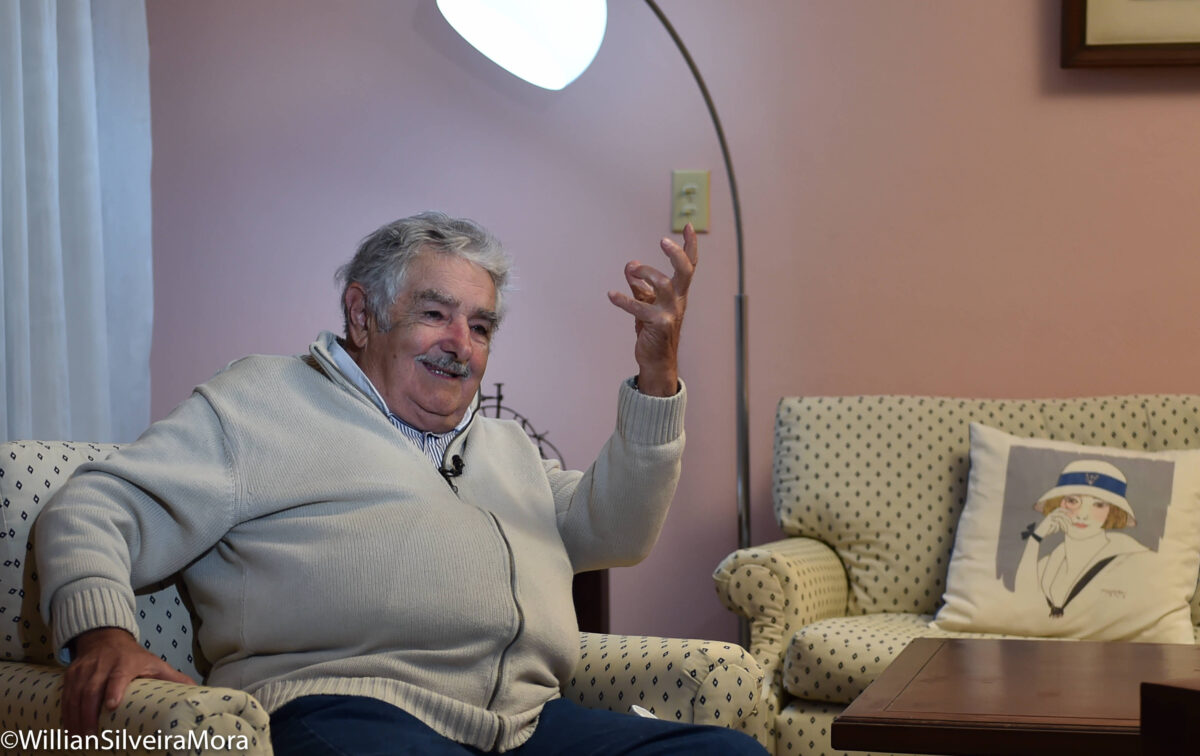
Pepe Mujica gives an interview to Randy Alonso Falcón for the Round Table, Havana, January 25, 2016. Photo: William Silveira Mora
Now there is the internet, there is the university, so it is as if the old people are superfluous, they are left over… It is a world that only wants young people, absolutely young, and then the old men and women disguise themselves to look younger. They all want to be young and they revoke themselves: they dye their hair, they remove wrinkles, they bother with fatness… in short…
Old people are on the way to being discarded. However, sometimes old people see farther because they have lived longer and if they are not yet crippled they have the function of trying to tell things to younger people that probably they are not going to understand them at that moment, but one day they will realize that they did not see part of reality… In Asian villages there is a great reverence for old people, but in Western villages there is no reverence. That is why it is good to retire…
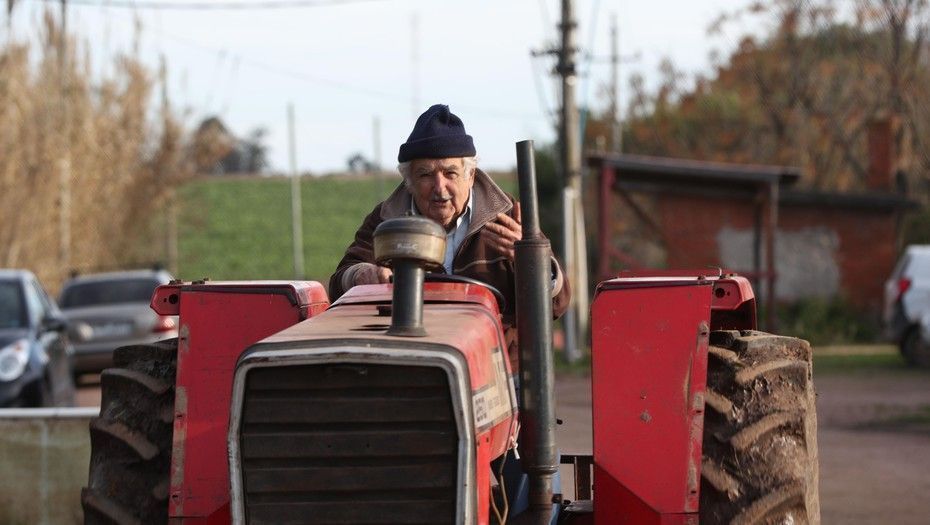
The former Uruguayan president is known for his modest lifestyle and direct speech. Photo: EFE
The Virus of Inequality

The virus of inequality or inequality in the virus
Two reports warn of a truth, the deadly Covid-19 pandemic has increased inequities and global differences and although anyone can get sick, those with lower incomes add up much more in the statistics, are poorer and will have less access to the hopeful vaccine …
Author: Juana Carrasco Martin

Translated and edited by Walter Lippmann for CubaNews.
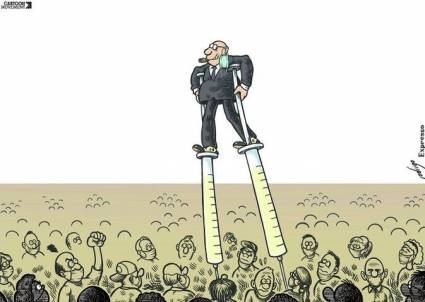
The combined wealth of ten of the world’s richest people could pay for vaccines to immunize everyone Author: Twitter Published: 02/02/2021 | 03:38 pm
Oxfam has been adamant that the combined wealth of the world’s ten richest people could pay for vaccines to immunize the entire world. At the same time, the International Labor Organization stated in a report that the Covid-19 pandemic has caused the loss of 255 million jobs.
Social inequity, unequal opportunities to access goods and services such as housing, education or health are among the consequences of the world’s health situation, where more than 103 million people have fallen ill and more than two million have died, and the count continues, while the vaccines already in use, which are not enough and are the object of disputes between first world countries that can afford them and are among their manufacturers, do not seem to be distributed fairly….
Those who have called it the virus of inequality are right. Here are some data that prove it.
The Oxfam report is titled “The Inequality Virus: Reuniting a coronavirus-torn world through a fair, just and sustainable economy,” and it announces all that it means and is needed.
Paul O’Brien, vice president of Oxfam America, in an interview with Democracy Now, noted of the pandemic situation: “The 10 richest people ended up making half a trillion dollars during the pandemic. The richest thousand got back all the money they lost in the pandemic, and they reached the same level of wealth in nine months. But at the same time, it has been disastrous for people at the extreme end of poverty.”
The report of this international confederation of 19 non-governmental organizations, which carry out humanitarian work in 90 countries under the slogan “working with others to combat poverty and suffering”, as they describe it on the Internet, warns that in the face of these exorbitant profits of billionaires, poor people will not recover from the economic and health crisis for at least a decade. If it does, it should be noted.
“In every country we looked at, inequality has worsened during the pandemic,” O’Brien added.
The Economic Commission for Latin America and the Caribbean (ECLAC) pointed out that this economic crisis and the slow exit from it will lead to the closure of 2.7 million companies in the region alone and some 8.5 million more workers will lose their jobs, in an emergency that by 2020 had already led to a significant drop in growth and economic contraction.
The economic recovery will be fragile and uneven, is the sharp forecast of ECLAC; the painful conclusion for millions of Latin Americans and Caribbeans who were already going through a limited growth, to which now add the consequences of the pandemic as the lower export of raw materials and the collapse of tourism, among other indices in decline.
ECLAC’s Executive Secretary, Alicia Bárcena, added other significant data in red: 54 percent of the region’s labor force does not have social protection or access to public health services.
Of this proportion, 57 percent are women, and this index added an aggravating factor that is reproduced in other regions of the world, even in developed countries. The International Labor Organization also brought its concerns to the 51st World Economic Forum in Davos, which met virtually this week and not in its usual snowy retreat in the Swiss Alps.
Globally, the pandemic cost workers $3.7 trillion in lost income and the destruction of the equivalent of 255 million jobs in 2020, four times the impact of the 2009 global financial crisis, the ILO reported.
But the summit meeting of politicians, businessmen and representatives of social and cultural organizations, which this time did not take place as usual in Thomas Mann’s Magic Mountain, did not exactly provide prodigious solutions at a peremptory moment for the planet. On the contrary, the widespread resurgence of the coronavirus, and even the new strains, highlighted the old weaknesses of health systems around the world, the injustices, the inaccessibility to medical care and vaccination that should be for everyone.
The slogan “The Great Reset” was crushed by an avalanche, and in this January 2021, as in the novel of the great writer, the problems discussed at the Davos Forum and the lack of intention to address them from what is fair, can be seen as the decadence of a way of life where the selfishness of those who only count profits in their finances over world health takes precedence.
The pandemic is conjunctural, although of extreme gravity. That is why its combination with structural problems, the same ones year after year, multiply the effects of inequity.
Check it out in these statements by Ursula von der Leyen, president of the European Commission, when the bloc intensified stricter monitoring of vaccine exports to countries outside the union. This is the case of the United Kingdom, because they had invested billions of euros and that “companies must now deliver” their vaccines to the 27 member states. “… We will set up a transparency mechanism for vaccine exports. Europe is determined to contribute. But it also means business.”
Ultimately that is the transparent truth,. The EU is a union of high-income rich countries, home to 342 billionaires; however, 123 million people at risk of poverty also reside there, Oxfam reported.
So what should we leave for the always neglected Africa? Cyril Ramaphosa, president of the African Union and of South Africa – one of the countries most affected by the coronavirus and even contributing a new strain, apparently of greater spread and lethality -, during his speaks at the 51st edition of the Davos Economic Forum, rightly criticized what he defined as “vaccine nationalism”, that is, the implementation of this selfish and inhuman attitude of hoarding, which hinders an equitable distribution of vaccines. “The rich countries of the world went out and acquired large doses (…) Some even acquired up to four times more than what their population needs excluding other countries”, a denunciation that he joined to the substantial comment: an increase in poverty is “expected for the first time in decades” and added, “the challenges we face were not created by the virus, they were created by us”.
You and I are not “us”, it is clear who fall into that category in the current pandemic and in the ancestral ills of that continent, the most powerful nations of the world that were colonial or neo-colonial empires.
The AFP news agency commented in this regard that bilateral agreements between governments and companies manufacturing vaccines against the Covid-19 virus could raise the prices of the drug and limit its supply to some regions.
Of course, the EU is not alone in this hoarding, where the United States and Donald Trump’s promise-threat that his country would be the first to be immunized and the willingness to buy all the vaccines produced in the world takes the lead.
Ramaphosa ratified the necessary denunciation: “We are concerned about vaccine nationalism (…) The rich countries of the world are holding on to these vaccines and we say: release the excess vaccines you have ordered and stockpiled”.
Reuters reported these days that the United Kingdom ordered 367 million doses of seven different vaccines for its population of approximately 67 million inhabitants, and the European Union secured almost 2.3 billion doses for a population of 450 million inhabitants.
However, the African continent, with some 1.3 billion inhabitants, barely completed 600 million doses of the international vaccine Covax, under the aegis of the WHO, which is also being requested by the rich countries.
We are faced with the confirmed presence of inequality in the midst of the terrible coronavirus.
Vaccination against selfishness and inequality

Vaccination against selfishness and inequality
By: Randy Alonso Falcón
January 27, 2021
Translated and edited by Walter Lippmann for CubaNews.
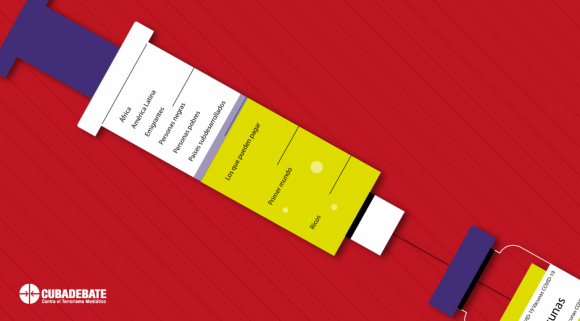 “It will not be an exhausted and outdated world order that can save humanity and create the indispensable natural conditions for a dignified and decent life on the planet. (…) This is not an ideological question; it is already a question of life or death for the human species.”
“It will not be an exhausted and outdated world order that can save humanity and create the indispensable natural conditions for a dignified and decent life on the planet. (…) This is not an ideological question; it is already a question of life or death for the human species.”
Fidel Castro Ruz
Speech at the Open Tribune of the Revolution, held in San José de las Lajas
January 27, 2001
Solidarity and Justice are still words in disuse even when the catastrophe concerns us all, like a great universal Titanic. A tiny and sticky virus has moved fears, shaken societies and health systems, provoked countless reflections on today and the future, but it has not succeeded in making equity and love for others prosper.
This week will mark the 100 millionth person infected with COVID-19 in the world and already more than 2 million people have died.
“Every day the gap between the haves and have-nots grows. The pandemic has reminded us that health and economics are linked and that we are all in the same boat. The pandemic will not end until it ends everywhere,” said World Health Organization Director-General Dr. Tedros Adhanom Ghebreyesus on Monday.
The numbers bear incontrovertible witness to the expert’s assessment.
The privileged cure
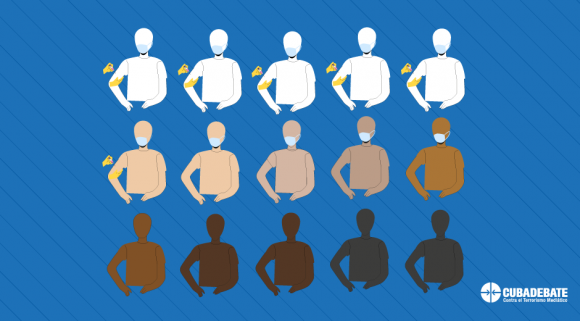
Despite numerous calls from the UN and various world leaders to seek a global response to the pandemic and to facilitate and share access to a cure for the disease, narrow views and deaf ears predominate.
“Science is succeeding, but solidarity is failing,” UN Secretary-General António Guterres noted on January 15. Several vaccines are already available worldwide to tackle the SARS-CoV-2 virus, but access to them is as deeply unequal as the world we inhabit.
Some 66.33 million doses have been administered to date, 93% of which were delivered in just 15 countries: the US, China, UK, Israel, United Arab Emirates, Germany, India, Italy, Turkey, Spain, France and Russia, according to the data analysis platform Our World in Data, based on figures from Oxford University.

In all of sub-Saharan Africa, only 25 doses of vaccine could be administered in Guinea. Populous countries like Nigeria, with 200 million inhabitants, are waiting for the first dose.
The same scramble that took place at the beginning of the pandemic with lung ventilators, masks and protective suits is now being staged with vaccines: hoarding, overpricing and speculation. “An immoral race to the bottom,” as the WHO’s top executive described it.
The COVAX fund, created as a sort of global effort to make vaccines accessible to the poorest nations or those with limited resources, announced that in February it will begin to deliver the first doses (they first said that in January), but it recognizes that it has been limited by the lucrative agreements of various individual nations with the pharmaceutical companies that produce the anti-COVID vaccines.
Another handicap has been the high cost of the vaccines that have the most international approval so far. As Norwegian expert John-Arne Rottingen told The Guardian, “The difficulty is that we really only have widespread international approval for marketing two vaccines: the two mRNA vaccines. The challenge is that one, the Moderna vaccine is very expensive, and the other, the Pfizer / BioNTech vaccine, which was first available and is now being applied in Europe, is moderately expensive compared to others, and requires a super cold chain. The price and cold chain makes it not the ideal vaccines for a global vaccine.”
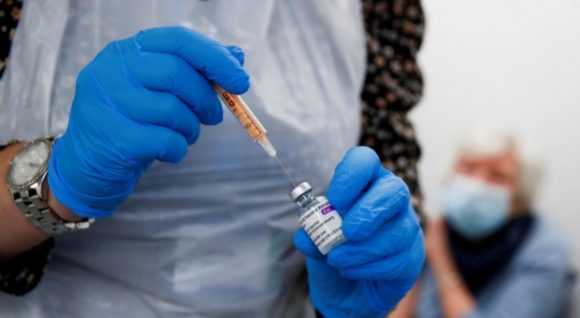
While nations like India and South Africa are calling on the WHO to campaign for pharmaceutical companies to relinquish intellectual property rights to COVID-19 vaccines and treatments. That would allow other qualified manufacturers in the South to expand production of those antidotes; countries like the US, UK and Canada have opposed the initiative. Those three wealthy nations have purchased or reserved enough doses to inoculate their populations at least four times.
High-income countries account for 16% of the world’s population, but hold more than 60% of the vaccines purchased so far.
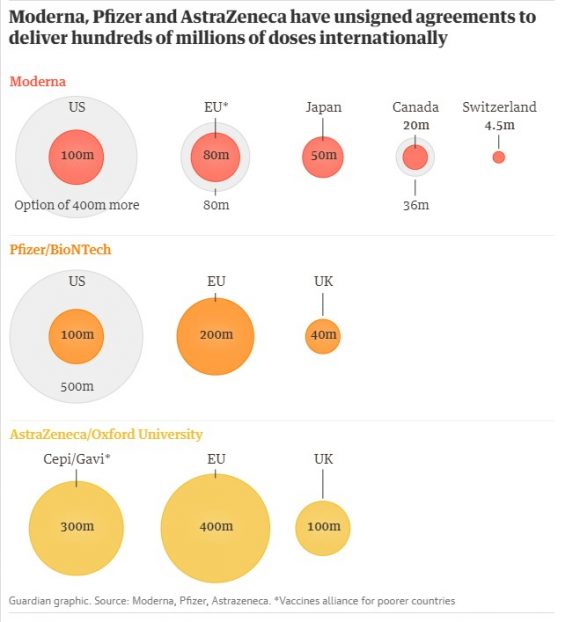
Rich countries account for the lion’s share of vaccine production. Graphic: The Guardian
Some forecasts put the total population of middle-income and poor countries that could be vaccinated this year at 27%. Duke University’s Center for Global Health Innovation estimates that there will not be enough vaccines to immunize the world’s population until at least 2023.
“The world is on the brink of a catastrophic moral failure, and the price of this failure will be paid in lives and livelihoods in the world’s poorest countries,” Dr. Tedros regretfully sentenced.
The virus of inequality
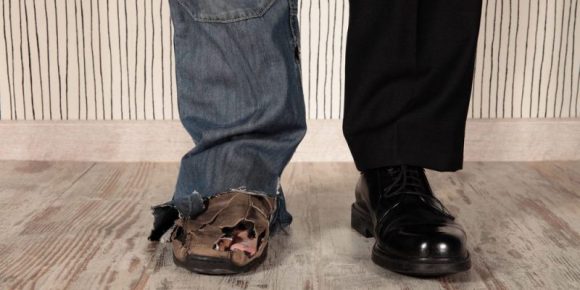
“Vaccine nationalism” is the exact reflection of an unequal and unjust world in which a few remain the great beneficiaries of wealth, for which billions must make do with the leftovers.
It is the “inequality virus” that OXFAM denounces in its most recent report, in which it evidences that the current failed economic system “allows a super-rich elite to continue to accumulate wealth in the midst of the greatest economic crisis since the Great Depression, while billions of people face great hardship to get by.”
While billionaires saw their fortunes increase between March and December 2020 by a total volume of $3.9 trillion-to amass an unimaginable $11.95 trillion-the poorest people on the planet will need “more than a decade to recover from the economic impacts of the crisis” accentuated by the COVID-19 pandemic.
Racial differences have also deepened. In the United States, the most powerful nation on the planet, if mortality rates were equal to those of the white population, nearly 22,000 Latinos and blacks would not have died from the coronavirus outbreak. In Brazil, people of African descent are 40% more likely to die from COVID than whites.
One of the conclusions of the Oxfam report is that “the pandemic is likely to increase inequality in a way never seen before”. The World Bank has warned that, in the current context, more than 100 million people could reach extreme poverty.
The 10 richest men in the world saw their net worth increase by $540 billion in the pandemic 2020 period. That list is topped by Jeff Bezos and Elon Musk. It also includes luxury group LVMH CEO Bernard Arnault, Bill Gates and Facebook CEO Mark Zuckerberg. According to Oxfam, the money hoarded by these potentates would be enough to prevent people from falling into poverty due to the effects of the virus and would also guarantee a vaccine for everyone on the planet.
Sunshine of the moral world
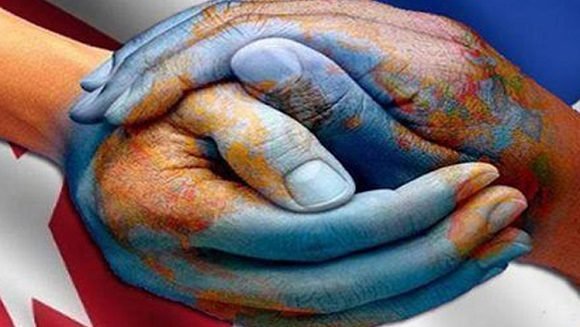
Among so much inequity and indifference, a small archipelago in the Caribbean, called Cuba, has been able to send thousands of doctors and nurses, in some 50 brigades of the “Henry Reeve” Internationalist Contingent, to more than thirty countries in Latin America and the Caribbean, Europe, Africa and the Middle East, to collaborate in the fight against the deadly disease.
Thousands of lives saved or recovered in a scenario of total complexity are the fruit of their solidarity work. The human and professional quality of these sons and daughters of the Cuban people overcomes the most diverse obstacles. It leaves a mark of affection, gratitude and example that is recognized by all those with whom they have shared and whom they have cared for.
That same country, with scarce economic resources but abundant in trained and educated talent, has been able to build an advanced biopharmaceutical industry, which is now preparing to produce 100 million doses of Soberana 02, one of the 4 vaccines on which its scientists are working. This would make it possible to immunize the entire Cuban population (it would be one of the first countries to achieve this) and to have more than 70 million doses available for other peoples of the South. There are already countries interested in acquiring it, such as Vietnam, Iran and Venezuela, Pakistan and India, the Director General of the Finlay Vaccine Institute recently announced.
Researchers from that institution are working with countries such as Italy and Canada to test the impact of the Soberana 01 vaccine on people who have already had COVID-19 and are convalescing, but are at risk of reinfection.
“We are not a multinational where (financial) return is the number one reason. We work the other way around, creating more health and return is a consequence, it is never going to be the priority,” Dr. Vicente Vérez, leader of the main vaccine research center in Cuba, explained to the press last week.
“Our world can only beat this virus one way: united,” the UN Secretary-General recently emphasized. Unfortunately, the vaccines of solidarity and justice have not been able to be applied in the rich world that dominates.
Che Guevara in Times of Pandemic
Che Guevara’s Gestures in Times of Pandemic
In these days when everyone shows the scars on their skin and in their consciousness, fruit of battles won and lost, I think that the gestures of Che are drawn in this Cuba that breaks the borders to accompany the people infected by the Coronavirus.
By Claudia Korol
March 22, 2020
Translated and edited by Walter Lippmann for CubaNews
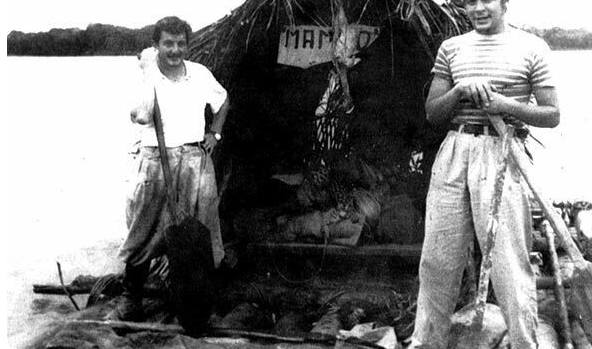
He was not yet Che, when he traced a route of travel through the lepers of the continent. He wasn’t the romantic hero or the guerrilla. He was a sensitive doctor willing to “touch” human pain, a product of poverty, stigmatization, isolation, and fear.
In their journey across the continent together with Alberto Granado, they met and challenged the logic of health care, visiting the lepers from Cordoba to Peru and Brazil. They sought answers in their dialogues with the Peruvian doctor Hugo Pesce, who shared with them everything from the writings of José Carlos Mariátegui – the rebel communist who questioned dogmas and made passion a fundamental part of the revolution – to his knowledge of the daily fight against leprosy.
In those years Ernesto wrote to his father:
“[…] farewells like the one the sick people in the Lima Leper colony gave us are the kind of farewells that invite you to go on […] All the affection depends on our going there without our duster or gloves, shaking hands with them like any neighbor’s child and sitting among them to talk about anything or play soccer with them. It may seem to you like a pointless comradely, but the psychic benefit to one of these sick people treated like a wild animal, the fact that people treat them like normal beings is incalculable and the risk involved is extraordinarily remote […]’.
There are many other writings by the young Guevara, in which he expresses his conviction that there is no true medicine that does not “touch” the roots of pain, and that does not break those imposed conditions of isolation, when they do not build bridges in which collective solutions to urgent needs circulate back and forth. There is no social medicine that does not question the capitalism that enriches itself by sowing disease and multiplying misery.
Was the young Fuser (Furibundo Serna, as his friends called him) an irresponsible boy when he visited the lepers and treated the people who survived there without fear or prejudice?
Was Che irresponsible when he decided to join his fate, as José Martí said, to the poor of the earth, making his way in the guerrilla struggle?
Many tried to make him irresponsible, before and after his immense figure multiplied in the hearts of the people of the world. To those who did, he replied in his ironic style, in his farewell letter to his parents written in 1965: “Many will call me an adventurer, and I am one, only of a different kind and one of those who put their skins on to prove their truths.
Che put his skin, body and soul, to fight the virus of capitalism, because he knew that its expansion and multiplication would only lead to new and increasingly dangerous wars, invasions, dictatorships, epidemics, and social diseases. His generous seed was tattooed on the social consciousness of the people
In these days when everyone shows off the tracks on their skin and in their awareness, fruit of battles won and lost, I think that the gestures of Che are indicated in this Cuba. [The Cuba] that opens its borders to receive the people infected by the Covid-19 virus that arrived in the English ship. I think that they are in the Cuban doctors who travel to Brazil, after the Bolsonaro government violently expelled them, subjecting them to humiliation and persecution as criminals; in those who travel to Madrid, to Lombardy, and to other destinations where the threat multiplies. Wouldn’t they be “safer”, wouldn’t they feel more “cared for”, taking refuge on the island and closing its borders?
Here, the profound internationalism of those who feel / live the world as a territory is put to the test, in the face of the narrow nationalisms and localisms that raise walls, as if the viruses could not get over them.
I think that the traces of Che, his gestures, are in the many doctors, nurses, health workers, who are exposed to the risks of the body to body, but who demand, more than the applause, that an adequate budget is allocated for health, for a healthy diet, to guarantee proper hygiene in all the houses, to safeguard the minimum conditions of care in hospitals, wards, and in the slums where the ambulances do not arrive.
Is the budget not enough, they say? Let’s make the collective gift that our mother from Plaza de Mayo, Norita Cortiñas, asked us for her birthday, and let’s decide once and for all not to pay the foreign debt. What’s crazy? Yes, it could be. Mothers have always been crazy. Their madness is our mental health as a people, it’s memory against impunity.
Great crises. New answers needed. Something like demanding that the state stop police patrols from chasing us when we go out to meet a basic need, and that they allocate the means and resources to bring health and food to distant places. Water for the Wichi. Freedom for political prisoners. Care for those who survive in places of detention.
Demand from the state and at the same time, build autonomy. I think that the traces of Che are multiplying in the activists of the popular movements that today organize the arrival of food, of elements of hygiene, of attention and care for those who are in necessary isolation. Health guerrillas – including mental health guerrillas – are shaking hands with lepers, with those infected by fear, by shame, by hunger, by despair. Popular guerrillas of the embrace, of care, of intransigent rebellion against the state militarization of all dimensions of life.
I speak of the community feminists, the popular feminists, the lifeguards, building bridges from solitude to solitude. I speak of the women who take care of the picnic areas and soup kitchens, looking for ways to continue reaching those who survive every day with food. I speak of the multiplication of the memory of resistance, flooding and overflowing the social networks, so that the 30,000 know that here we are, as always, building squares in the houses if necessary, making history so that the revolutions do not fail. So that they know that neither yesterday nor today, we will leave them out in the open. That we will repeat the gestures, until no virus has a little crown. Until collective victory, against loneliness.
Winning First Place Through Prevention

Winning First Place Through Prevention
A difficult, but not invincible rival, appears in our geography. It needs to be defeated, in the purest sports jargon, with a KO.
By Gladys Leidys Ramos
March 23, 2020
Translated and edited by Walter Lippmann for CubaNews.
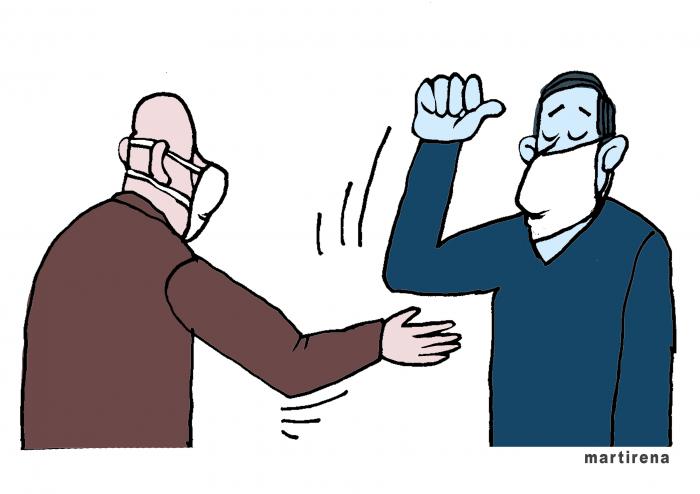
Photo: Granma Archive
A difficult, but not invincible, opponent appears in our geography and needs to be defeated, in the purest sporting jargon, with a KO. Victory will not be rewarded with a gold medal, but with the most brilliant prize: life. For this, we have the best Cuban team: the national health system and our families.
The game will be tense, long and with constant strategies, at the height of the best game of chess, basketball or baseball. The Cuban people and all its institutions will fight for the ultimate victory.
The rapid spread of the new coronavirus, which causes Covid-19 disease, has set off alarm bells all over the world. A total of 171 countries, among them 41 Latin American and Caribbean peoples, are being threatened by this pandemic. However, Cuba has the necessary conditions for its prevention.
The measures taken by the country’s leadership and the national health system are intended to avoid any vulnerability that could undermine the well-being and quality of life of every Cuban. In this effort, the Committees for the Defense of the Revolution are holding health meetings throughout the country to help raise the perception of risk of this disease.
In the People’s Council of San Francisco de Paula, in the capital city of San Miguel del Padrón, one of these debates was held on the causes and consequences of the new coronavirus, its forms of propagation and the actions that should be taken to reduce the possibilities of infection.
“The objective of this meeting is to keep the population prepared. I insist on hygiene precautions for each person: washing hands with soap and water or alcoholic solutions; also cleaning surfaces with this type of product. Primary care, where the actions begin, is ready and trained to deal with this phenomenon. In the polyclinics and clinics, all the personnel are working to keep the information on the subject up to date,” Luelsis Hernández, director of health in the municipality, told the residents of the popular council.
Sandra Layón, coordinator of Zone 55, expressed her concern, specifically with the population of San Francisco, because she believes it may be vulnerable. “There is talk that the fundamental basis for containing the infection is the doctors’ offices, but I think that the work of the doctors and nurses in our territory should be intensified, in the field, which is the main scenario for detecting cases.
On that point, Hernandez Torres said that although there are 20 doctor’s offices in that community, and each one has doctor and nurse coverage, he agreed with the call to defeat this disease.
Risk perception and prevention are key against the coronavirus. Although the work of health specialists is essential in preventing phenomena like this, the will and responsibility of each one is equally important.
Nurse Maria Hernandez called for responsibility and discipline in the investigations that are currently being carried out in the area,, This is one way in which the primary health care network can rule out or identify any case of infection by the virus.
Idania Bastida, a pharmaceutical worker, agreed with her and called on all the inhabitants of the popular council to be able to maintain the hygiene of the community with the resources they have.
“It is important not to form gatherings on street corners, especially now that we have several collectors. We must also respect the schedules for dumping that waste. We know that there are places where trucks cannot gain access due to the geographical characteristics of our town, but that is why the collectors were installed on the corners,” said the ceding company.
Adis Aba Escalona, an official of the Federation of Cuban Women, took advantage of the occasion to inform the residents that the creative women in the municipality are working on making nasobucos, as a protective measure.
“For that reason, we are calling on everyone who knows how to sew to join in this work and complete as many as possible, not only in San Miguel del Padrón, but also in the entire capital and, if possible, in the country.
Jan Carlos Serabay warned of the need for young people, as a sector that can be vulnerable due to the low perception of risk, to contribute individually and collectively, not only to avoid infection in their age group, but also to transmit information from social networks, so that Cuban society becomes informed and aware.
On the other hand, Dr. Dairis Escobar recalled that, unlike other peoples, our country has the possibility of taking effective measures. “We take measures so that every Cuban becomes a protagonist and communicator of hygiene actions and discipline from the workplace and the home; for that we do not need greater material resources, only the perception of risk and the willingness of each person to take care of themselves and others.
The health system is doing its job, from the preparation of each worker in the sector, doctors, nurses, cleaning staff, laboratory workers, etc., to the conditioning of rooms in hospitals, to wait for admissions with everything ready,” he added.
Prince Charles Tests + for COVID-19

Prince Charles of England Tests Positive for COVID-19
March 25, 2020
Translated and edited by Walter Lippmann for CubaNews.
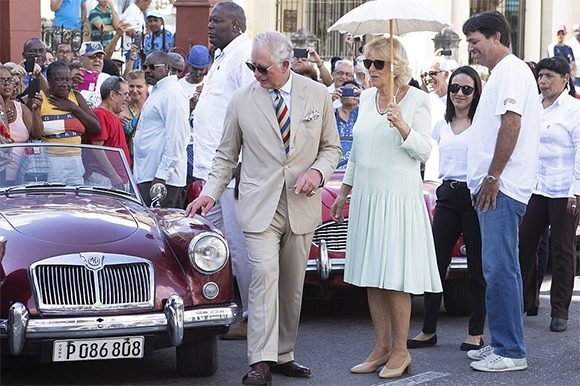
Prince Charles of England and his wife the Duchess of Cornwall on their visit to Havana in 2019. Photo: REX.
Prince Charles of England has tested positive for coronavirus, sources at Clarence House, his residence, confirmed.
The 71-year-old Prince of Wales “has shown some mild symptoms but otherwise remains in good health and has been working from home in recent days,” a spokesman for the British Royal House said.
His wife, Camilla Parker Bowles, Duchess of Cornwall, has also been tested for COVID-19, but she tested negative, the text added.
Sources at Clarence House said Charles and Camilla are currently in isolation at the royal residence of Balmoral in Scotland, adding that it was not possible to determine who infected the prince with the virus.
“It is not possible to determine from whom the prince contracted the virus due to the many commitments he made in his public role over the past few weeks,” the official statement from the Royal House said.
Queen in good health
Buckingham Palace, the official residence of Queen Elizabeth II, said the monarch last saw her son on March 12 and that “he is in good health.
The prince’s last public engagement was that same day, and he has been working from home ever since, according to official sources.
However, the Press Association news agency says the prince has had several private meetings with different people, who have already been informed.
According to the latest figures from the British Department of Health, there are currently more than 8,000 confirmed cases of coronavirus in the UK, but the number of cases is likely to be higher.
Of that number, 422 people have died from COVID-19.
Against the Coronavirus, Count on Cuba
Against the Coronavirus, Count on Cuba
By Jorge Gómez Barata
March 18, 2020
Translated and edited by Walter Lippmann for CubaNews
I heard two appeals to the Cuban government yesterday. A brief and peremptory: “Close the airports: Now!” The other one sounds like a plea: “I ask the Cuban government please DO NOT to send our medical personnel anywhere…”
By the way, the Chinese authorities believe they have identified “patient zero.” He is a man who contracted the virus in mid-November 2019. Since then, more than 100 days, after which there are three sick people in Cuba, no dead, and about 150 contacts under medical supervision. why then close the airports?
The other fellow Cuban, asks that “no medical and nursing be sent anywhere…” The thing is, the government doesn’t send them. In any case, it summons trained professionals and in full use of their rights acting voluntarily. Probably, many take on the task not as a task, but as an opportunity. I know comrades, myself among them, who believe it was worthwhile to go Angola where the risks were enormous.
In December 2019, China was surprised by the aggressiveness of COVID-19, but not Europe and the United States. In fact, since the end of December 2019 and early March 2020, had more than 60 days to prepare. The warning was early, although the reaction turned out to be late. The alarm, at times a mixture of impotence and hysteria, is motivated not only by the explosive spread of COVID-19, but also by the ineffectiveness of health systems in responding to situations to guide social and economic activity. societies to observe minimum rules.
Cuba, with more than 100,000 doctors and sufficient nursing staff, more than 3000 hospital beds for that purpose, the means to diagnose and the necessary medicines and a national mobilization led by the president of the republic, manages the threat. It does this without demanding extraordinary sacrifices and costs from the population which they cannot incur.
Cuban solvency stems from having faced two major epidemics: African Swine Fever in 1980 and a sudden outbreak of Dengue Fever that 1981 affected more than 300,000 people, 158 of whom died. To study, participate in events or get cured, they come to the island by the thousands, people from poor countries and tropical climates where there are infectious diseases. Cubans, too, by the hundreds of thousands as happened in Angola, travel and stay in those countries. Rejecting some and preventing others from traveling is not part of Cuba’s national health doctrine.
Cuban solvency can be explained by the fact that for decades, thanks to the existence of an effective health model, based on a system of primary care, an advanced approach to the epidemiological issue [has been in place] It addresses the prevention and treatment of diseases like Dengue, Zika, Cholera, Chikunguya and others. Cuba’s strengths show that it is not always about money. From one day to the next some developed countries can have fifty billion dollars to deal with the pandemic. However, no amount of money will allow you to install national primary care and to have hospital capacities to deal with the COVID-19 crisis. Nor is it possible to inculcate all people, the habit of going to the doctor as the Cubans do, among other reasons, because none of them will leave in debt or broke.
The task of the moment, as the World Health Organization suggests, is to identify, isolate and cure the infected, and control rigorously their contacts. As for the tourists, people presumably healthy, checked in their countries and re-examined when you get to the island, there’s nothing to be afraid of. As it has always been done, those who arrive healthily will be cared for and those who unfortunately get sick, they’ll be cured. See you there.
Movies and the Coronavirus

Movies and the Coronavirus
By Rolando Pérez Betancourt
March 16, 2020
Translated and edited by Walter Lippmann for CubaNews.
A few days ago, actress Gwyneth Paltrow appeared on social networks wearing a mask and this recommendation: “I’ve already been in this movie. Stay safe. Don’t wave. Wash your hands often.”
The film Paltrow was referring to is Contagion (Steven Soderberg, 2011), the most-watched on the Internet in recent weeks because of its similarity to that global scourge that keeps humanity against the wall, Covid-19.
Contagioun has a first-rate international cast: Jude Law, Marion Cotillard, Kate Winslet and Matt Damon, in addition to Paltrow, and is the film, within the genre of catastrophe, that most resembles what we’re experiencing, something like if since fiction its scriptwriter, Scott Z. Burns, had been sending out a warning message.
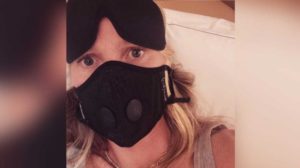
Gwyneth Paltrow has posted an image on Instagram recalling the film Photo: Instagram
In Contagion, Soderberg once again demonstrates his ability to combine experimental films with documentary elements and commercial touches, a formula that, through the use of breathless editing, opens the doors to vast audiences, while at the same time immersing the viewer in an atmosphere of tribulation.
The film talks about a virus that is supposedly transmitted from Hong Kong. Gwyneth Paltrow’s character, infected by a chef who shakes her hand after preparing a strange dish, later visits a casino where she blows the dice on a man who will die two days later. There he will contaminate everyone who approaches him, people who in a few hours will take planes to different parts of the world. On her way back to her native Minnesota, she falls ill and dies.
The epidemic takes on a global dimension and scientists begin to work on a vaccine, while the most diverse reactions take place in a film that gives great importance to the secondary characters: a blogger who denounces an international conspiracy that links the government with the pharmaceutical industry, cases of extreme selfishness, countries with no economic possibilities that are not involved in international cooperation, the manipulative role of the media and the lukewarmness, at the level of the nation and from the first moments, with which it faces what is happening.
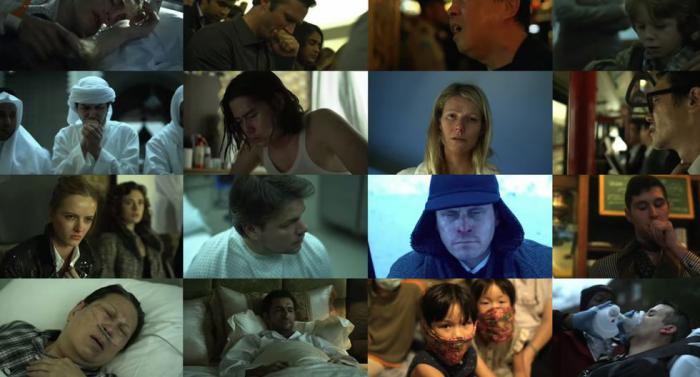
Soderberg once again demonstrates in Contagio the ability to combine his experimental cinema with documentary elements and commercial touches Photo: sensacine.com
It is true that there are other films that deal with the subject, but none with the realism of Contagioun, hence the worldwide resurrection that makes many people look for it, and especially those people who remain in quarantine in their respective countries, perhaps because after long anguished suspense of anguish, the conflict opens the way to hope.
It is logical that in this “re-envisioning” the scriptwriter of Contagion, Scott Z. Burns, a faithful collaborator of Soderberg, returns to the foreground – with greater force than nine years ago. Interviewed by the website Slate, he had no qualms about condemning the cold actions of some governments in the face of the pandemic, starting with President Trump, who in the first moments relied more on his elusive messages via Twitter than on concrete actions.
According to Burns, while writing the script for the film, he went to meet with leading scientists who told him that the issue was not whether what he said could happen, but “when” it would happen. “When scientists say something, it’s better to listen,” the screenwriter said, and he had words of praise for the professionals at the U.S. Centers for Disease Control who advised him on his script. But he complained, “We’re finding out that we don’t have enough kits to test and for some reason, we’ve dissolved our pandemic response teams.
Speaking of the many people who tell him that the film was becoming a reality, Burns responds that he said, “I never imagined that there were leaders in this country who would leave us defenseless.
From a long interview appeared on the Slate website and an extensive lunge by Scott Z. Burns: “The administration and the Republican Party talk about protecting people with a wall [on the border with Mexico], but we don’t even have test kits. And he blames the lack of measures against hoarding, demonic price hikes, and other reprehensible aspects. “Where is the law when there are people on the Internet selling miracle cures?” he wonders. Those who saw the film remember the tricks of a grotesque con man in it, one more similarity of the many that come to show that, between fiction and reality, only the passage of life is in between.
Subscribe to Blog via Email
| M | T | W | T | F | S | S |
|---|---|---|---|---|---|---|
| 1 | 2 | 3 | 4 | 5 | 6 | 7 |
| 8 | 9 | 10 | 11 | 12 | 13 | 14 |
| 15 | 16 | 17 | 18 | 19 | 20 | 21 |
| 22 | 23 | 24 | 25 | 26 | 27 | 28 |
| 29 | 30 | 31 | ||||
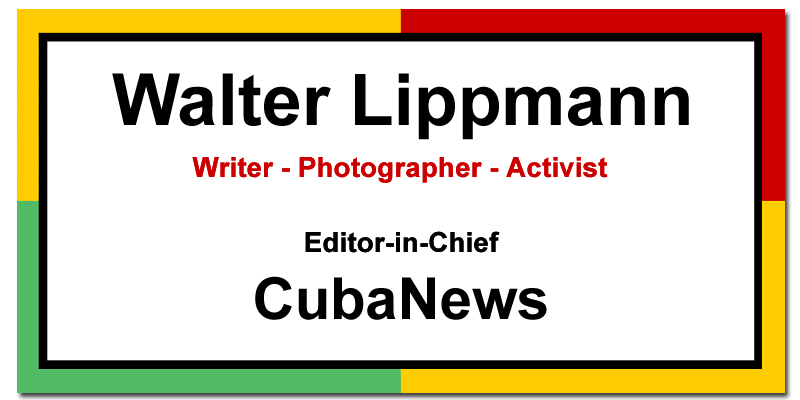

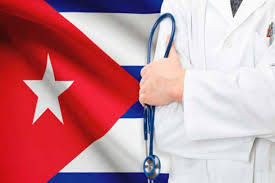

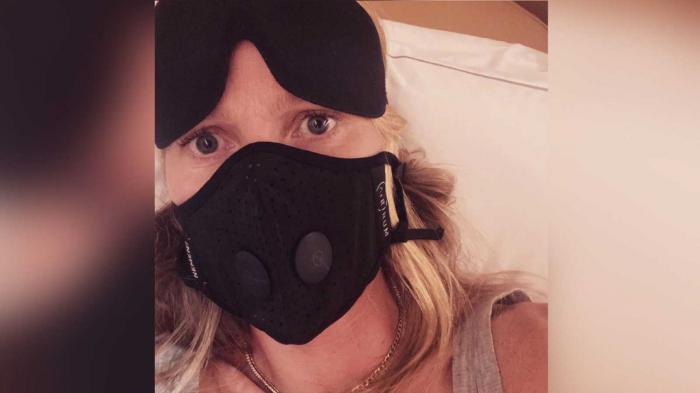
You must be logged in to post a comment.